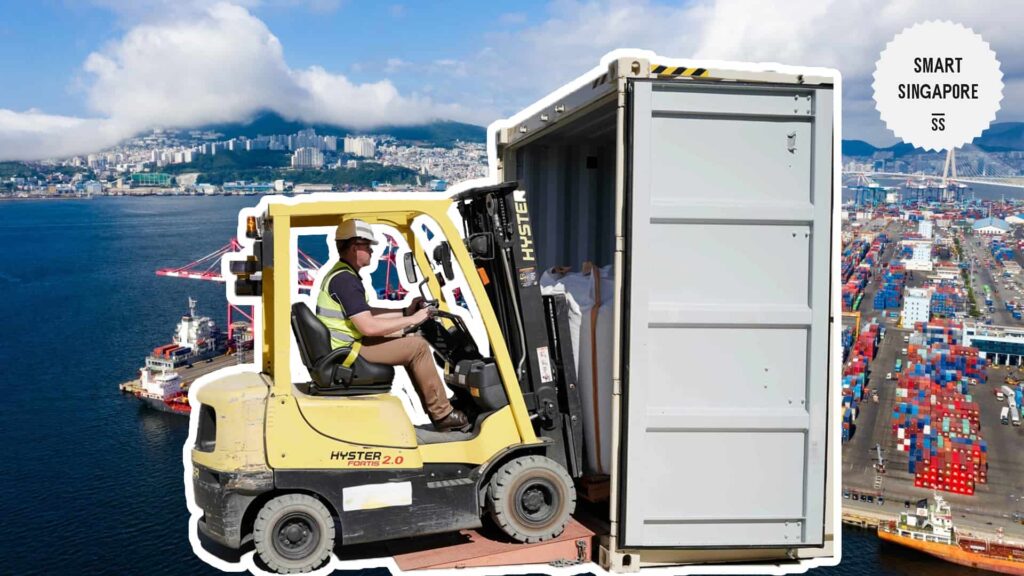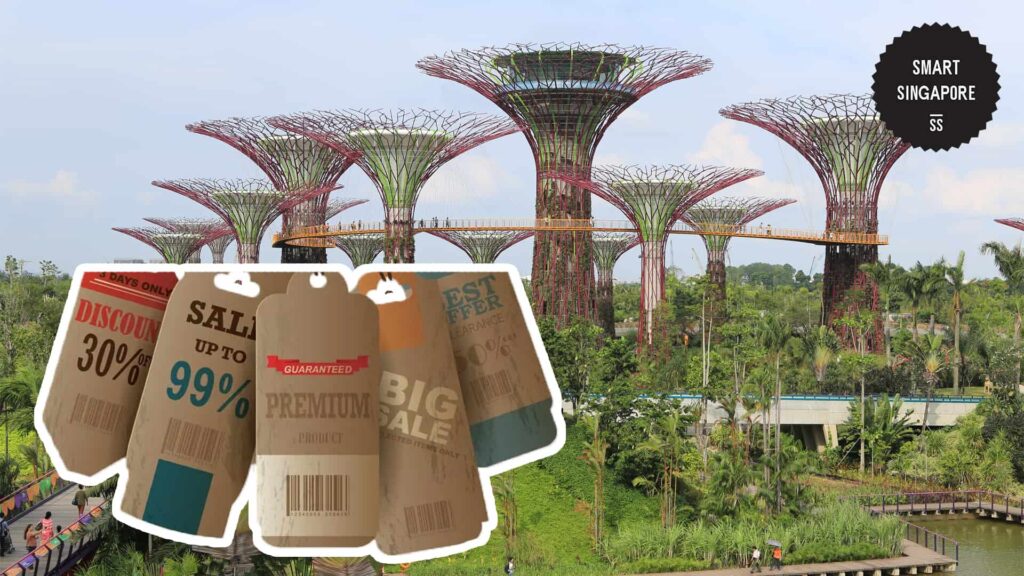Categories > Guides and Tips

4 Reasons Why Singapore Is So Expensive
- Limited resources and a strong currency force imports
- High taxes generate revenue but also increase costs
- High living standards require great investments
- Excellent Transportation and Digital Infrastructures
- Healthcare for Everyone
- Top-Notch Public Education
- The growing population puts pressure on resources
Singapore, the Lion City, boasts a modern skyline, rich culture, and delectable cuisine. However, it also holds the title of being one of the most expensive cities in the world (Economist Intelligence).
Let’s dive into the factors that contribute to Singapore’s high cost of living. Let’s also understand the economic forces shaping this vibrant country.
Here’s why Singapore is so expensive.
Limited resources and a strong currency force imports

Singapore only has 728 square kilometers of land area and no natural resources. This situation creates unique challenges, such as growing crops or producing raw materials.
Because of this, the country imports necessities like food, water, energy, and raw materials.
While importing ensures a steady supply, it also brings high transportation costs. It also keeps Singapore reliant on international trade rules.
Additionally, the strong Singapore dollar maintains the strength of the economy, but it also inflates the costs of imported products.
High taxes generate revenue but also increase costs

Singapore’s 22% income tax rate might not seem like a budget-breaker at first glance. But it’s the combo of taxes that starts to add up for those living in the Lion City.
The 9% goods and services tax (GST) is applied to almost everything you buy, from that cup of coffee up to the monthly MRT pass.
As a result, even essential items such as groceries and utilities become more expensive due to the tax (see this announcement from the Inland Revenue Authority of Singapore).
The government uses the tax revenue to fund excellent schools, hospitals, and infrastructure. However, these benefits may not always translate into lower prices at grocery stores for the average Singaporean.
Plus, some argue that a chunk of that tax money gets funneled into big-ticket projects like fancy new buildings or high-tech initiatives that might not immediately impact everyday expenses.
Singapore’s tax rates play a role in keeping the cost of living on the high side. It’s just one of those trade-offs for living in a place constantly on the cutting edge.
.
High living standards require great investments

Singapore’s reputation for excellence doesn’t come out of thin air. The vibrant city invests heavily in maintaining its exceptional living standards, and this commitment shows in various aspects of daily life.
Let’s dive into three key areas where these investments are made.
Excellent Transportation and Digital Infrastructures

Singapore takes immense pride in its top-notch public transportation. Buses and the Mass Rapid Transit (MRT) seamlessly navigate Singapore, offering residents a convenient way to get around.
The government’s commitment to public transportation drives expansion and evolution. Projects like the new Thomson-East Coast Line train station stand as examples of this dedication.
Singapore’s digital infrastructure is also something that sets it apart from its neighboring countries. There’s the cutting-edge fiber optic network, cashless payments, and e-government services.
The pursuit of infrastructure excellence, while offering unparalleled convenience and connectivity, contributes to Singapore’s high cost of living.
Healthcare for Everyone

Singapore prioritizes everyone’s health. Resources are invested in top-notch doctors, hospitals, and medical technology.
Subsidies help, but residents also contribute through taxes and fees, making healthcare a key part of the city’s cost of living.
This focus on health reflects Singapore’s commitment to high standards of living. It ensures everyone has access to excellent care, even if it comes at a price.
Top-Notch Public Education

Singapore’s population is highly educated thanks to a top-notch education system.
From universities like the National University of Singapore to public schools across the country, Singapore invests heavily in its people’s minds.
This focus on education pays off in two ways. A skilled workforce fuels economic growth, but it also contributes to the higher cost of living.
Rising salaries encourage professionals to seek better housing, increasing the likelihood of property shortage and increasing property prices.
Luxurious experiences like dining and entertainment become pricier as businesses adjust to cater to this demand.
The growing population puts pressure on resources

Singapore’s bustling population keeps growing, fueled by its citizens and visitors alike. This boom puts a strain on resources, making things a bit pricey.
Space is tight, which drives up rent and real estate prices, creating a feeling of scarcity. Even getting around can feel crowded, with public transport filling up fast.
Water, power, and jobs can all feel stretched thin as well, especially for young families and professionals.
The government adds infrastructure, but the demand keeps the cost of living high. It’s a balancing act: maintaining a vibrant city while accommodating everyone.





